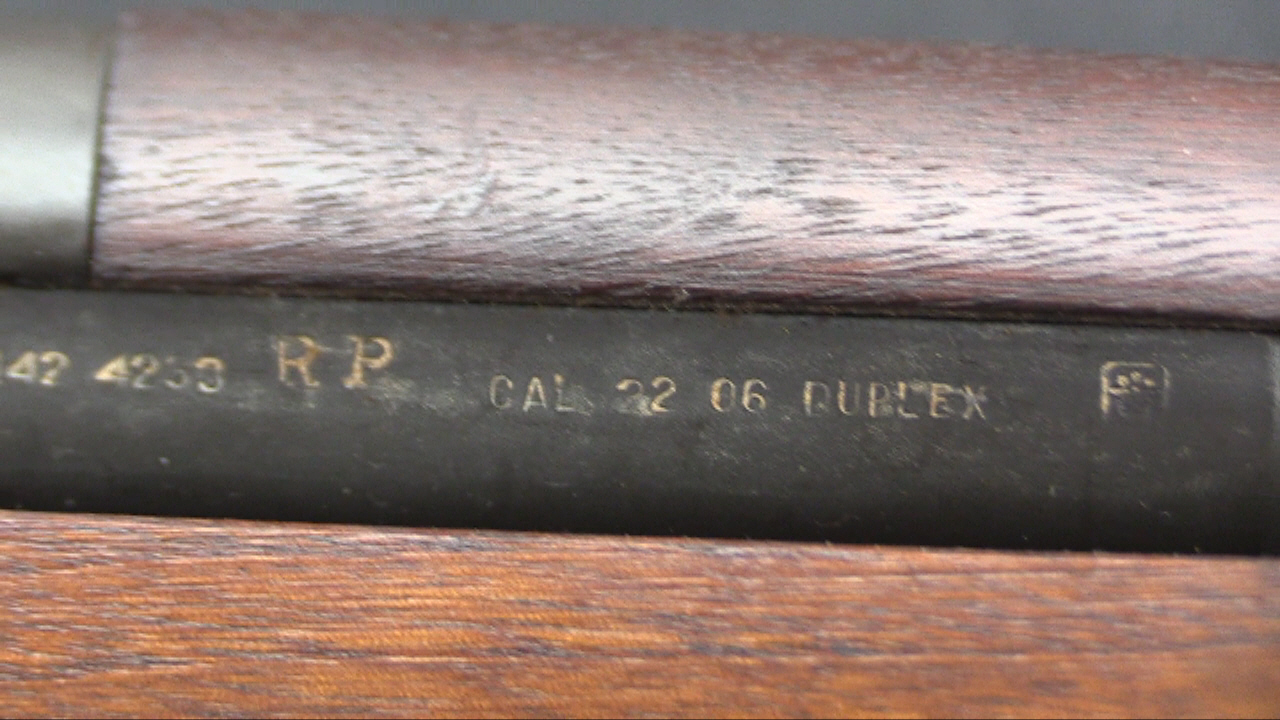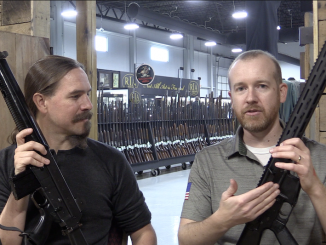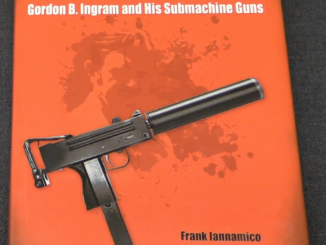The Jenks carbine was a remarkably svelte and elegant breechloading system patented by South Carolinian William Jenks in 1838. It was tested by the US Navy in 1841, and found to be quite successful. The Navy would proceed to adopt it, and order 1,000 rifles and 5,250 carbines from N.P. Ames in the early and mid 1840s. The last 1,000 carbines were a separate contract which included the use of the Maynard tape primer system, and this contract was purchased from Ames by the Remington company, which manufactured those carbines. The Army also tested the Jenks system, but found it completely unsuccessful – perhaps due to a misunderstanding of the appropriate powder charge and projectile.
Mechanically, the Jenks uses a bolt which slides forward and rear connected to a larger action lever on the top of the receiver. Opening the lever retracts the bolt, opening a round port through which a ball and powder charge may be dropped into the breech. Shortly before the Civil War, most of the guns in Navy inventory were modified to extend this round loading port into an elongated oval, to allow the use of paper or linen cartridges instead of loose powder.




Hey Ian:
What is the best way to contact you?
“The Army also tested the Jenks system, but found it completely unsuccessful – perhaps due to a misunderstanding of the appropriate powder charge and projectile.”
It would be interesting to see original report from trials, nonetheless it seems that U.S.Navy was more apt for allowing more complicated weapon system in inventory.
As example, later Winchester Hotchkiss bolt-action repeating rifle:
https://en.wikipedia.org/wiki/Winchester_Hotchkiss
was adopted by Navy and Army, but if first used theirs until replaced by Lee straight-pull bolt action, second one decided to withdrawn theirs in 1883 as inferior to Springfield 1873.
Good grief. The issue isn’t really inferior development more than that the guns weren’t soldier-friendly! The Navy allowed usage of more sophisticated weapons because sailors were taught to keep everything in good shape, lest the ship sink due to stupidity. In contrast the Army had too many incidents with any long arm without an external hammer (apparently someone accidentally shot “Alfred” in the knee). They wanted guns requiring very little training for mastery. Thus the soldiers did not trust striker-fired guns. I could be wrong.
Also note, that Infantry Naval when going into combat have much more limited manpower, due to fact of limited capability of transport means, so it is logical that they wanted to be able to fire more shots in given period of time. Equipping men with rifles able of higher Rate-of-Fire was way to do it, even if at price of more complicated construction.
Just to make sure: did William Jenks invented the so-called mule ear lock? (Patent: U.S. Patent No. 747 on May 25, 1838. [https://patentimages.storage.googleapis.com/af/d5/ce/933895a6ba503a/US747.pdf]?)
I’m sorry, I was in hurry: this patent (U.S. Patent No. 747 on May 25, 1838. [https://patentimages.storage.googleapis.com/af/d5/ce/933895a6ba503a/US747.pdf]) is obviously not the patent of the mule ear lock.
As to what went wrong with the Army tests;
Incidentally, the Jenks breech toggle lock is, so far as is known, the first such locking/breech-sealing system used in the United States and possibly elsewhere. It was therefore very likely the direct ancestor of the locking system on the Maxim machine gun, the Borchardt and Parabellum pistols, and etc.
cheers
eon
Regarding your last statement, I have not see anything as advanced so early on. The lock mechanism is meticulous.
Agreed. Adding to eon’s comment, no gun is idiot-proof!
I would say rather than lesson from is as follow: do not to forget to supply manual with weapon (or at least send someone who know how to operate it)
As far as I’m aware, the first toggle lock mechanism for guns was invented in 1832 by a Belgian inventor by the name of Montigny, incidentally the same man who would go on to modify the mitrailleuse gun of later years.
You can find some details on the gun in the following links:
https://images1.bonhams.com/original?src=Images/live/2012-11/23/S-19796-0-3.pdf
https://books.google.co.uk/books?id=O6NbAAAAQAAJ&pg=PA153&dq=Montigny+1832+Needle+Gun+Russian&hl=en&sa=X&ved=0ahUKEwiQv-HInJrmAhVfQhUIHRZiBhMQ6AEIKTAA#v=onepage&q=Montigny%201832%20Needle%20Gun%20Russian&f=false
Flintlock Jenks breechloaders were purchased for the Texas Navy ca. 1839-40. There is some debate about musketoons for the army too…
I must say that I have both under-hammer caplocks–another New Hampshire/New England affectation–and also a mule-ear side-hammer squirrel rifle in .32. The side hammer does a much better job of preventing bits of percussion cap thrown into the face than the under-hammer does, that is for sure. “Eyes and ears!” as the safety slogan puts it.
Hm. Apparently 250 “queer looking” Jenks carbines were delivered from N.P. Ames of Springfield, Mass. in April 1841, and these were the side-hammer percussion model. My mistake! Some may have been used in the so-called Santa Fe expedition, so the Galveston Hussars and Galveston Fusiliers may have been the Texian army units so equipped.